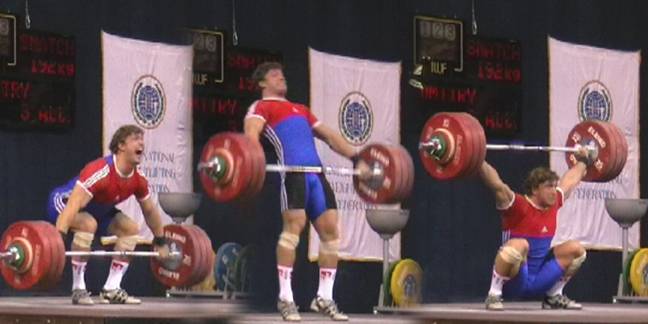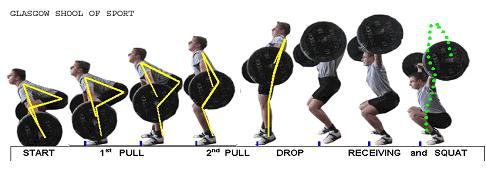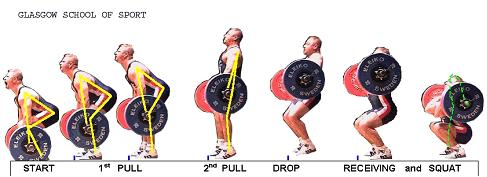A Quick Fix for your Hang Clean or Snatch Form
What do a Marine, a sailor, and an acupuncturist have in common? An inability to fully extend their hips while hang cleaning and snatching!

Yesterday was my day to coach Olympic lifts. No, I am not USA-W certified, however, I spent my college career learning the Olympic lifts from two men extremely well versed in the Olympic lift: Evan Lasher and Gary Valentine. At 6’4” 320, Evan could dunk a 16lb shotput and run a 4.9 40 yd dash, and ofcourse he could throw heavy objects very very far. Gary, who is THE most well versed man in the Olympic lifts that I have ever met, was setting a lifetime best in the hang squat clean (343 lbs) at the age of 47, weighing 240.
Within a 3 hour span yesterday, I worked with a marine, a sailor, and an acuputurist, all of who came to me with an inability to get under the bar during the Olympic lifts. When watching their clean technique, they were making the most common fatal mistake in people who “Olympic lift”: they never came to triple extension.
Triple Extension
Triple extension is the most effective way for your body to generate force into the ground. It is the result of simultaneous extension of the knee, ankle and hip. Athletes achieve this position when sprinting, jumping, throwing. starting a sprint, pushing off from the bloicks during swimming, batting, and the list goes on.

To best feel the difference between getting to triple extension, and not getting to triple extension, step away from your computer and try to jump as high as you can, paying attention to what happens at your hips knees and ankles. If you are in a room with a high ceiling, you should have hit triple extension. If you are in a room with a low ceiling, I'm guessing your body wouldn’t allow you to fully extend in order to prevent you from banging your head into the ceiling.
With this concept in mind, let’s take a closer look at the Olympic lifts. The path of the bar in the clean and snatch are relatively the same, just with different end points. The pull from the floor or the hang for both lifts should result in the bar moving nearly completely in the frontal plane, or you could say in a vertical path. Any sort of displacement from this vertical pattern will result in a negative displacement of the bar, decreasing your chance of getting underneath.


Again, getting back to the jumping in your room concept, if you were in a room with a high enough ceiling you were able to use all the force your body could currently generate. To compare it to an Olympic lift, you were able to hit triple extension, resulting is a huge pull on the bar, giving you enough time to get underneath.
If you were in a room with a small ceiling you weren’t able to fully hit triple extension, and weren’t able to generate maximal force into the ground. To compare this to the pull on a bar, you didn’t hit triple extension, and didn’t maximize the pull on the bar. This decreased your chance of getting under the bar during your clean or snatch.
Think, the greater the pull on the bar, the greater your chance of getting under the bar.
Now this sounds like a simple concept, however, it’s not always the easiest to feel. There are a bunch of cues that go into solid Olympic lifting technique, feeling for one takes time.
Figuring Out Triple Extension
A great way to know if you hit triple extension, is by having someone watch you, tape yourself, or by feeling the velocity of the bar following your pull. One of my athletes from yesterday felt triple extension for the first time when the bar nearly hit him in the chin with the bar. He was surprised with how fast the bar traveled when he finally extended properly. Before that moment, the bar was moving to the same height as an upright row with that weight.
This is one of the reasons I would rather have an athlete learn with a slightly weighted bar, than with PVC piping. You can train with a PVC pipe all day, and your arms wouldn’t fatigue. Train with a loaded bar and suddenly muscling your way through the movement will only last for a few minutes. Once your arms are tired you HAVE to begin to use your hips, and fire your traps.
Conclusion
To recap, if you are having issues getting under the bar during your Olympic lifts, check and see if you’re hitting triple extension. If you believe you are hitting triple extension and are still not getting under the bar, ask your coach to take a closer look. If you feel as if you are hitting triple extension and still don’t get under the bar, it might be a time to find a new coach.
Have a strong day!